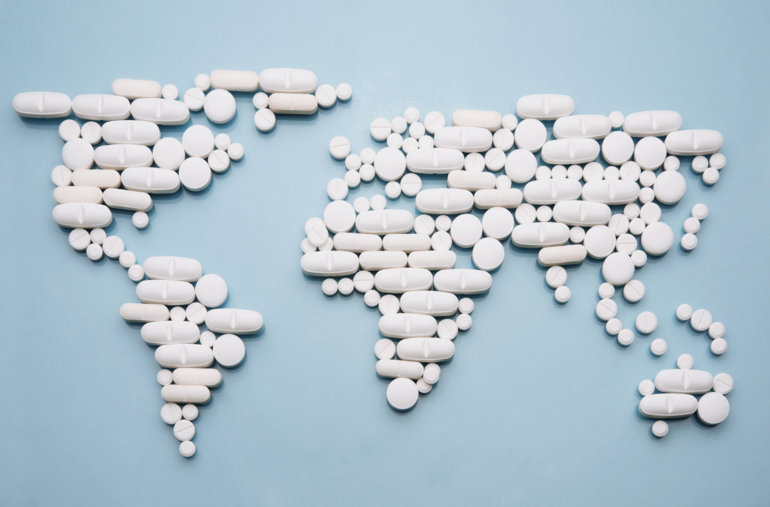According to recent reports, the medicine supply chain is experiencing disruptions and shortages, with cholesterol and blood pressure drugs being particularly hard to find. Approximately 239 drugs are currently unavailable, including 13 on the critical list of the World Health Organisation. It is concerning to note that medications to control high blood pressure and cholesterol are becoming increasingly difficult to obtain. In recent years the advances in pharmaceutical logistics, which uses real-time data from dispensaries to ensure stock, is proving helpful in creating solutions to these shortages. Companies or institutions adjusting to updated logistics are seeing positive results.

Pharma Logistics News Takeaway Points
Medicine supply chain disruptions and shortages are affecting the availability of essential drugs, including those used to control high blood pressure and cholesterol
Causes of medical shortages include high demand, manufacturing problems, pharma logistics challenges in the news, business-related problems, geopolitical factors, and conflicts
Low margins on medicines and changing supply chain structures are major causes of pharmaceutical stock shortages, which can lead to essential medication shortages
Drug shortages affect everyone, including businesses, medical staff, and human rights organisations.
The high costs of energy, packaging materials, and bottle cap materials can also contribute to shortages.
The effective use of data and analytics in pharmacy logistics can improve access to medicines worldwide
Inventory visibility and efficient transportation modes have enhanced the medicines supply chain
Effective collaboration in supply chain management is hindered by the lack of tools, visibility, and organisational structures. Reliable systems that connect stakeholders with information can enable confident decision-making and targeted improvements.
Medical Shortages Causes
Experts say, there are several possible reasons why there might be a shortage of medicine. These include high demand, which can be influenced by seasonal or unpredictable factors, as well as supply chain issues like manufacturing problems, logistics challenges, and business-related problems. Additionally, the ongoing conflict in Ukraine has created challenges for the supply of certain raw materials, while geopolitical factors like seasonal epidemics have led to an increased demand for specific types of medication. While these more immediate issues are certainly causing problems, they also serve to highlight long-standing weaknesses in the overall supply chain.
Reasons for Pharma Stock Shortages
According to experts, low margins on medicines and changing supply chain structures are major causes of pharmaceutical stock shortages. When pharmaceutical companies experience low margins, they may reduce production or discontinue certain drugs, leading to essential medication shortages. Changing supply chain structures can create bottlenecks, causing delays in delivering drugs to pharmacies and hospitals. The limited capacity of pharmaceutical manufacturers and the increasing global demand for drugs can exacerbate this problem. As a result, patients may suffer serious health consequences due to the shortage of critical medications they rely on.
Drug Shortage Impacts Availability
Let us look at how pricing and commercial factors impact medicine availability. It turns out that drug shortage affects everyone, including businesses, medical staff, and human rights organisations. Unfortunately, the problem is exacerbated by the sharp increase in costs. Despite the regulation of prices for generics, many drugmakers in Europe are hesitant to expand their capacity due to the high costs of energy, packaging materials like cardboard, and bottle cap materials such as aluminium, which have all been affected by the ongoing war in Ukraine.
How Pharmacy Logistics Can Help Have you ever wondered how pharmacy logistics can improve access to medicines worldwide? Effective use of data and analytics offers knowledge on how to identify shortages and overcome them. By leveraging these tools, we can better manage the supply and demand of medications for both pharmacies and individual patients. With these improvements, we can ensure that people receive the care they need, regardless of their location.
Inventory Visibility Enhanced
With better inventory visibility and efficient transportation modes, the medicines supply chain has seen enhancement. Real-time data from hospitals and pharmacies can increase transparency and improve understanding of medical product demand.
Supply Chain Collaboration Solutions
According to a research report by Zencargo, a lack of tools, visibility and organisational structures hinders effective supply chain management. The solution involves coordinating internal and external stakeholders to manage the flow of goods efficiently. It’s challenging when misaligned incentives disrupt collaboration. Despite obstacles, however, only a small percentage of supply chain users invest in technology.
Reliable software systems that connect stakeholders with information enable confident decision-making. Digitising the SKU catalogue, connecting directly to manufacturers and carriers, and integrating with WMS, ERP, and sales systems can fix data challenges. Cloud logistics platforms can centralise communication and enable faster decision-making. Historic visibility and reliable benchmarks can reveal systematic issues such as process bottlenecks, poor supplier performance, or unnecessary costs, allowing for targeted improvements.
Conclusion Here is a roundup of this week’s pharma logistics news. A collaborative and proactive approach can mitigate medicine shortages and supply chain disruptions. Effective use of data and analytics in pharmacy logistics improve worldwide access to medicines. Inventory visibility and efficient transportation modes enhance the supply chain.


